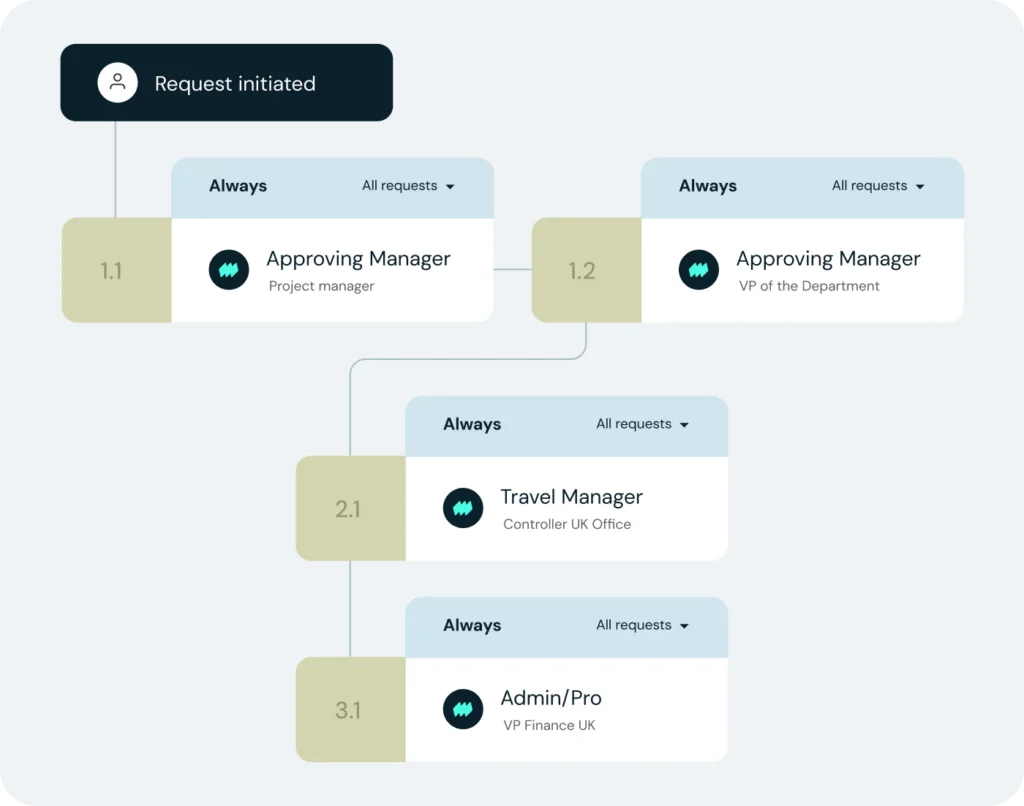Ask any restaurant finance team and they’ll tell you that there are unique challenges that come with managing a restaurant business. From fluctuating food costs and ever-evolving labor laws to high employee turnover and notoriously thin margins, it is a constant balancing act. But there’s one high impact opportunity that can often get overlooked: expense management.
With so many unknowns in the industry, it’s crucial to control what you can to boost your restaurant’s bottom line. That’s where T&E management comes in.
Introducing virtual cards for restaurants
Virtual cards, coupled with a robust travel & expense management system, can be a game-changer for restaurants. These digital cards (that can even be paired with physical cards) offer unparalleled control, security, and efficiency — allowing you to manage budgets, streamline operations and reduce costs.
Here are five ways that modern T&E management helps optimize operations for restaurant companies.
1. Standardize and enforce expense policies
One of the biggest challenges for restaurants is ensuring that employees adhere to company expense policies. Whether your employees need to make purchases for ingredients or kitchen items, spending can get out of control quickly without policy enforcement — affecting your restaurant’s profitability.
With virtual cards, you can set spending limits, restrict certain categories, and even require pre-approval for specific expenses. This helps to prevent unauthorized spending, reduce fraud, and ensure that your company is compliant with regulations.

2. Protection from corporate card fraud by controlling access to cards
Traditional credit cards can be a security risk, as they can be easily lost or stolen — especially in an industry with such high turnover. With virtual cards, you can create cards for specific expenses or employees, limiting their use to only what is necessary and reducing the likelihood of skimming or chargeback fraud. You can also instantly issue and cancel cards to meet onboarding and offboarding needs. This helps to protect your company’s finances and reduce the risk of fraud.
3. Automate receipt collection and reconciliation
Manual processes for purchasing and reconciliation can be time-consuming and error-prone. Rather than collecting employees’ receipts every month for purchases or food vendors, automation can take the burden off your finance team by eliminating this repetitive manual work.
With automation, restaurant businesses can automatically categorize business expenses, collect and match receipts, streamline payment workflows and approvals, and track every purchase using a single tool. The result: faster receipt collection and more accurate reporting for future budgeting.

4. Manage travel and logistics costs
Whether you’re transporting goods, working with delivery vendors, or sending employees to conferences or other franchise locations, virtual cards can be used to pay for all these expenses. They offer greater control over your travel and logistics costs, allowing you to set spending limits, track expenses, and generate reports to identify areas for cost savings — while getting full visibility into every charge.
5. Centralize and track expenses across branch or franchise locations
If your restaurant chain has multiple locations or franchises, it can be difficult to track expenses across all of them. Virtual cards can help you centralize your expense management, providing you with a single view of all spending across branches. This makes it easier to map trends, identify areas for cost savings, and ensure that your company is operating efficiently.

Expense management for restaurants: What’s next?
By leveraging virtual cards and expense management solutions, restaurants can gain greater control over their finances, reduce costs, and improve efficiency. Whether you’re an independent restaurant or a large restaurant chain, these tools can help you navigate the challenges of the industry and achieve your business goals.
Would you like to learn more about how virtual cards can benefit your restaurant? Schedule a demo with Mesh Payments today.
-
Get the latest blogs from Mesh by subscribing to our newsletter







